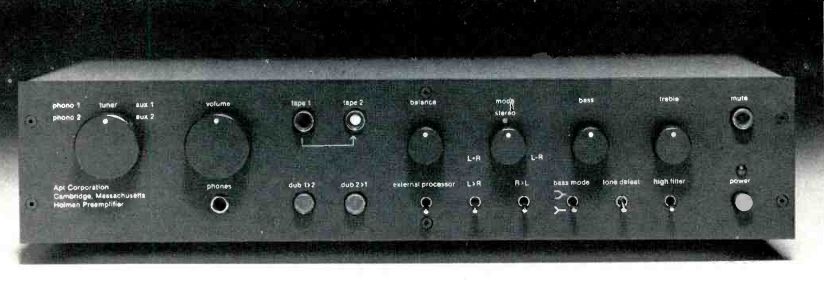
Manufacturer's Specifications:
Frequency Response: 20 Hz to 20 kHz, ±0.5 dB.
Maximum Output: 7 volts.
THD: 0.01 percent.
IM Distortion: 0.01 percent.
Phono Sensitivity: 1.25 mV for 0.5 V output at 1 kHz.
Phono S/N: 74 dB, "A" wtd., for 5 mV input.
Phono Overload: 100 mV.
High Level Sensitivity: 0.32 V.
Dimensions: 15.04 in. (38.20 cm) W x 3.30 in. (8.38 cm) H x 9.32 in. (23.67 cm) D.
Weight: 12 lbs. (5.45 kg).
Price: $493.00 East, $502.00 West.

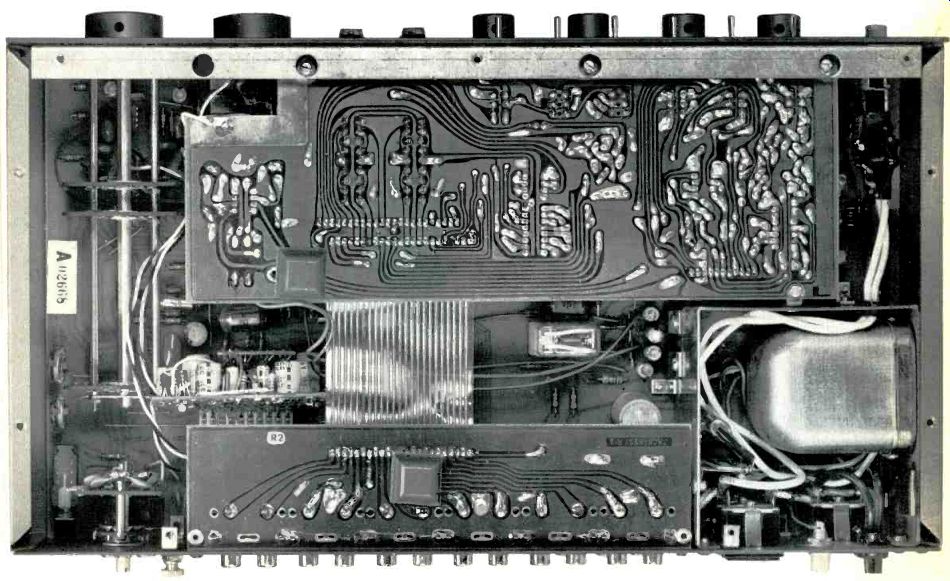
During the development of a rationale for generating new and more useful tests of the performance of control preamplifiers, it seemed wise to take a fresh look at the functions which they are meant to perform. A control preamplifier, such as the Apt/Holman unit which is the subject of this report, provides two main functions. Besides amplifying low-level signals, it provides control and switching functions.
Many designers appear to concentrate most of their effort in designing excellent amplifiers while tending to ignore the control and switching functions. Others provide very good control and switching capabilities but provide less in terms of sonic quality.
It also seemed desirable to ascertain whether certain audibly perceived qualities might be related to technical measurements. Because of the high performance level of modern control preamplifiers, this is not an easy task. Certain data are presented in this report which may appear unusual at first, but by being able to compare them with similar data in future reports, it may be possible to more easily assess differences between units. Both the amplifying and the control/ switching functions were investigated, and information is presented concerning the quality of each.
The Apt/Holman control preamplifier displays a high level of attention to design details related to both amplification and control/switching functions. It is definitely the result of extensive investigation into some very important factors which affect the quality of reproduction. Tomlinson Holman, who, while at Advent Corp., developed a novel phono preamplifier for the Advent Model 300 receiver, has done a great deal of just such investigation. In fact, a number of articles and technical papers by Holman and his colleague Frank Kampmann are available from Apt Corp. as reprints. The amount and quality of their research are very impressive.
The separate Owner's Manual and Service Manual are also worthy of mention, since they are truly exceptional in their thoroughness, detail, and clarity. It would be impossible to cover every detail of such an engineering tour-de-force as this unit represents in a short report. However, an attempt will be made to cover the most salient features and make appropriate comments. The reader is also advised to take advantage of the literature which is available from Apt Corp. or its dealers for there are features which we will not have adequate space to cover completely.
The Apt/Holman control preamplifier has a number of well-thought-out functions. Beginning at the phono inputs, of which there are two, a unique control is provided for each which allows the channels to be balanced for any phono cartridge. By using another unique control on the front panel, which allows a left-minus-right condition, the phono balance control can be adjusted for a null while playing a mono record. This feature provides a means of compensating for differences between the left and right-channel outputs of phono cartridges, which are almost never exactly the same and will have a bearing on the accuracy of stereo reproduction.
The control on the front panel, which is definitely unique, is called Mode. This control provides a continuous change from L+R (full counter-clockwise) through Stereo (detented center position) to L-R (full clockwise). The L+R position provides minimum stereo separation (mono). As the control is rotated past the center or Stereo position, a reduction of the center or mono information is affected. Apt Corp. recommends its use for varying the depth of the apparent stereo image. Another use, which may prove to be disconcerting to many record companies, is for determining just how "stereo" a record really is. Since the L-R information represents the stereo information, as opposed to the L+R or mono information, listening briefly to any program material with the control in the L-R position will allow a determination as to just how much stereo information is really present. The Mode control is well designed from the standpoint that proper level is maintained while changing from L+R (mono) to Stereo. It reduces the level to each channel by-6 dB when in the L+R mode, which is proper. The L-R mode showed a reduction of-5.5 dB to each channel.
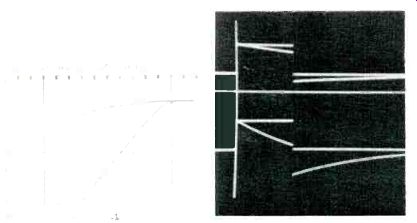
Fig. 1A Frequency response with the infrasonic filter vs. response with no
filter. (Note frequency scale multiplication factor of 0.1.)
Fig. 1B Response to 5-mS pulse, with input and output overlaid. Low-frequency components of the square wave are delayed.
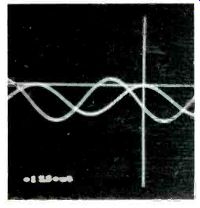
Fig. 2 Response with the infrasonic filter to 20 Hz with input and output
overlaid in the left channel, which shows a 15.5-mS delay. See text.
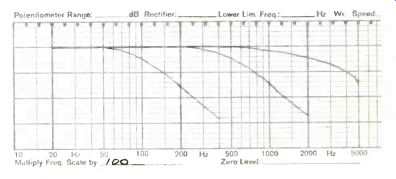
Fig. 3A Frequency responses of the two high filters vs. response with no filter.
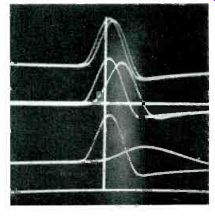
Fig. 3B Response to 30-kHz cosine pulse for the two high filters and with
no filter, input vs. output, showing time delay.

Fig. 3C Phase delay.
Phono 1 provides a switch selection of either 47 or 100 kilohms. A second switch provides for selection of 50, 100, 200, 300, or 400 pF. Apt Corp. also provides a listing of many cartridges and arms which is a great assistance in determining the correct matching required for optimum performance. A very helpful infrasonic filter is also provided, which is controlled by a switch on the back panel. It very effectively reduces the ill effects upon the system caused by record warps and eccentricity, cartridge/arm resonance, and turntable motor vibration. It is recommended by Apt Corp. that the filter be left in for all normal listening, which is why it is located on the back panel. It also functions on all inputs since, for instance, a radio station may have a cartridge/arm resonance situation which could degrade the sound. Figure 1 shows the effectiveness of this filter M removing these kinds of undesirable subsonic signals. Figure 2 shows the time delay of the infrasonic filter at 20 Hz for the left channel. The 15.5-mS delay should cause no serious problems. A 16.8-mS delay was found in the right channel with the filter activated. This means that there is an interchannel time differential of 1.3 mS. Without the filter, the delays are 3.25 and 3.35 mS for the left and right channels respectively, which might have some effect upon systems which use a subwoofer. Experimenting with the polarity of the loudspeaker leads between the subwoofer and the upper-range loudspeakers, plus careful room placement of the loudspeakers, should ameliorate any problem in the bass range due to this delay. The effect of phase shift or time delay between channels does not really affect localization; however, it can affect how well the bass is propagated in a given room by a pair of loudspeakers. Since the natural modes of a room and the location of the loudspeakers already play a major role in this, the interchannel delay should be just one more factor to consider. Common-bass subwoofers can be more directly affected by the interchannel time differential at these frequencies, since the output will not be added algebraically if the input from the two channels is not exactly in phase. (Editor's Note: The manufacturer points out that this amounts to a summing error of about 0.03 dB at 20 Hz. E.P.) Phono 2 may also be adapted for low-output moving-coil cartridges by using appropriate plug-in modules which Apt Corp. is making available for specific cartridges. During our evaluation, we used the Model 201A pre-preamplifier module, as we had a Denon 103D cartridge available, for which this model was specifically designed, and the combination provided excellent performance. Reproduction with records was very clear and detailed with good signal-to-noise ratio.
Stereo imaging was excellent with true stereo recordings.
(Besides using the Mode control, we use a stereo display to determine whether a source has time-differential information or whether it is mostly mono.)
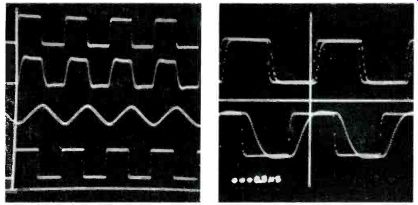
Fig. 4--Response to 10-kHz square wave. From top, with no filter, with 40-kHz
filter, with 8-kHz filter, and input.
Fig. 5--Rise time. Top is with no filter, 3.0 p S. Bottom is with 40-kHz filter, 8.5 p S. Both are overlaid on the input, a 20-kHz square wave with 1.5p S rise time.
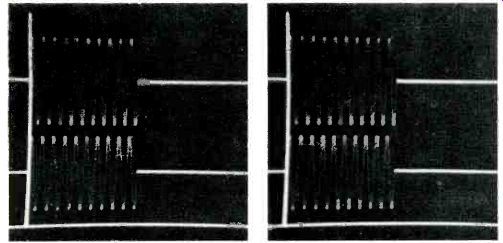
Fig. 6--Response to 10-kHz tone burst of 1-mS duration. Top is response with
no filter; bottom is input. No change is discernible.
Fig. 7--Response to 10-kHz tone burst of 1-mS duration. Top is response with 40-kHz filler; bottom is input. A very slight change on the trailing edge of the burst can be seen.
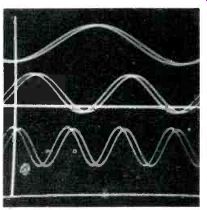
Fig. 8--Response to various steady-state signals with the 0-kHz filter and
the input overlaying the output. Top is 5-kHz signal; middle, 10 kHz; bottom,
20 kHz.
A slight delay can be seen between the input and the output of each set of signals.
Apt has paid a great deal of attention to eliminating such things as r.f. interference, crosstalk from unused channels, and extraneous signals, all of which would cause deleterious effects in the program. There are two high-frequency filters; a front panel switch selects either an 8-kHz filter, which is useful in removing noise arid distortion from older records or poor radio broadcasts, or a 40-kHz ultrasonic filter, which can be used to reduce possible slew-induced distortion in the following power amplifier by band-limiting the signal being fed to it. These filters are removed from the circuit when the tone-control defeat switch is activated. If the signal to be amplified were composed of only frequencies from 20 Hz to 20 kHz, then this filter would be unnecessary. Unfortunately, this is not the case, since, particularly in high-quality, wide band systems, higher frequency signals seem to abound. A good moving-coil cartridge can have strong high-frequency components as high as 200 kHz (see John Curl's Forum in Audio, Sept., 1979). The exact reason for this could be the subject of a separate article. Suffice to say, such high-frequency components can raise havoc in an audio system unless they are effectively dealt with, as they are by the Apt/ Holman control preamplifier. We feel, as does Apt Corp., that the 40-kHz ultrasonic filter is best left in for most program material. The center, detented position of the tone controls provides absolutely flat response, so there should be no adverse effect from their being left in the circuit in order to utilize the 40-kHz filter. Amplitude vs. frequency-response curves for the Apt/Holman control preamplifier with no filter and with the 8-kHz and 40-kHz filters are shown in Fig. 3.
Data are also shown for the time delay and phase delay.
Figure 4 shows the effect of these filters upon a 10-kHz square wave. Figure 5 shows the rise-time with and without the 40-kHz filter. The rise-time for the 20-kHz input signal is also shown for comparison. There are some who will argue that the effect of the 40-kHz filter can be heard, and they are correct. However, the "edge" they may hear, without the filter, may be due, possibly, to the strain placed upon the power amplifier and loudspeakers in trying to cope with ultrasonic frequencies. Since it is a subjective judgment as to whether the 40-kHz filter is better left in or out in any given situation, we can only recommend that it be tried and thank the manufacturer for allowing us the opportunity to do so.
To clarify the reason why tone bursts are much less revealing than the tests we have chosen, Figs. 6 and 7 are presented. The output signal is shown as the upper trace, while the lower trace shows the input signal. This consists of 10 cycles of 10 kHz or a 1-mS burst. One has to look very closely at the trailing edge of the burst in the upper trace of Fig. 7 to see the tiny effect caused by the 40-kHz filter.
Figure 8 shows the effect of the 40-kHz filter upon the phase delay at 5, 10, and 20 kHz. The delay is fairly uniform over the audible range and should be as innocuous as the delay caused by playing a record a year or more after it has been recorded. Figures 9A, B, and C show the interchannel phase effects at 2 Hz, 20 Hz, and 200 kHz. All filters are removed except that Fig. 9B shows the effect of the phase difference between channels with the infrasonic filter activated.
Figure 10 shows the tone-control curves. The treble controls are moderately effective in adjusting for differences between records and even for loudspeakers with different high frequency energy slopes. It might have been better to have moved the zero or "hinge" point up to 3 kHz so that high frequencies could be compensated without affecting the midrange. (Editor's Note: According to the manufacturer, the action of the treble control was chosen for best equalization of overly bright upper-midrange material without excessive loss of top-octave response. -E.P.) Two different switch-selectable bass contours are provided. One set of bass contour curves has been heavily researched by Holman and Kampmann and is the subject of an engineering report published in the Journal of the Audio Engineering Society (a reprint is available from Apt Corp.). The result is a bass control which is actually usable by a serious listener. Figure 11 shows the last 22 steps of the 32-step volume control from full on to about the 9 o'clock position. Steps from about 4 o'clock to 12 o'clock are about 1.5 dB each and very uniform.
For anyone concerned with playing back recorded material at realistic levels or evaluating different playback devices, with repeatability, this is a boon. More importantly, the channel to-channel balance or tracking of this control, which affects stereo localization, is within 0.2 dB over the last 22 steps, from full on to about 10 o'clock, which is amazing. In fact, it is within 0.3 dB over the whole 32-step range, which is even more amazing.
Some other technical facts worthy of brief mention: The output overload point at 1 kHz was 7.75 volts rms into 300 ohms. The actual impedance was found to be 313 ohms. The overload appeared to be uniform from 20 Hz to 20 kHz. The input clipping points, for a 1-kHz input signal, were 144 mV rms at the Phono 1 input and 13 mV rms at the Phono 2 input which had the Model 201A pre-preamplifier module installed. The gains of the right channel of Phono 1 and 2 were variable over a total range of 5.8 dB and 5.5 dB respectively, which are more than adequate to balance the interchannel output difference of any phono cartridge. The output capability of the separate headphone amplifier is shown in Fig. 12.
This lists the maximum output voltage just before clipping, for various resistive loads, which should represent most possible headphone impedances.

Fig. 9A--Interchannel phase, 2 Hz, no filter.
Fig. 9B--Interchannel phase, 20 Hz, infrasonic filter.
Fig. 9C--Interchannel phase, 200 kHz, no filter.
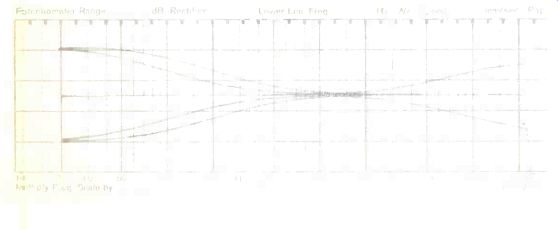
Fig. 10--Tone-control response curves. Maximum positions are shown. Two bass
contours are switch selected, and a tone-control defeat switch also removes
the high filter.
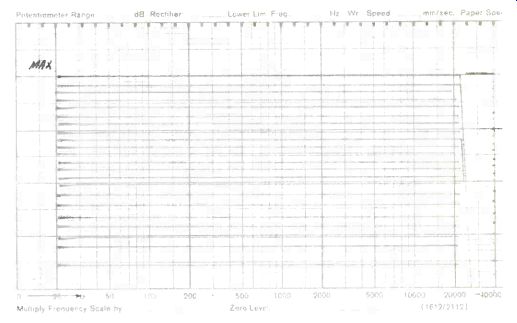
Fig.
11--Volume control attenuation in the left channel, showing 22 steps of the
32-step control. Vertical scale is 1 dB per division. Tracking between left
and right sections of the control is within 0.2 dB over this range.
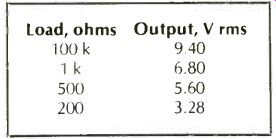
Fig. 12--Maximum output of the headphone amplifier at 1 kHz for various loads.
The compensation for the RIAA standard disc-recording characteristic curve is within the 0.2-dB tolerance claimed by Apt Corp. A great deal has been written lately concerning the necessity of achieving very close accuracy in RIAA compensation, and tolerances to within 0.1 dB and even less have been mentioned. This is really only necessary if one is corn paring the audible differences between two preamplifiers while playing the same recording with the same phono cartridge/arm/turntable through the same loudspeakers during a comparison. In such a case, it is imperative that the amplitude vs. frequency response of the two preamplifiers be adjusted to be extremely close from the RIAA phono input to the output. It should be emphasized, however, that there are much greater differences between records due to the spectral balance adjustments made by the producer or engineer during recording. In fact, if the same master tape were used to generate disc masters by two different disc mastering facilities, they would have audible differences, due to different spectral balances, of far greater magnitude than that caused by a preamplifier having an RIAA compensation error of even ± 0.5 dB. A closely maintained tolerance of the RIAA compensation is certainly a worthwhile goal, however, and Apt Corp. is to be commended for their achievement.
The absolute polarity of signals is not affected by the Apt/ Holman control preamplifier. Since almost all sounds in nature are unsymmetrical, that is, the air pressure variations around the normal ambient pressure may not vary up and down equally over the period of the sound, then this should be taken into account in any good sound-reproducing system. It turns out that a reversal of the polarity of reproduced sound opposite to that which it had in nature is clearly audible. Neglecting this fact has often caused judgments to be made as to the quality of reproduction which were erroneous, and this has been particularly true about judgments concerning the differences between sound-reproducing components. From our experiments over the past number of years, it also appears that listeners have no difficulty in determining the exact polarity which is the same as the polarity of the natural sound.
The Apt/Holman preamplifier was tested to determine if polarity reversals occurred between any input and output, including the tape dubbing and external processor loops. No reversals happen under any conditions. (During all auditions of equipment, attention is paid to the absolute polarity of signals through the total system. This has been the case for all previous reports generated by us for Audio.)
The Apt/Holman control preamplifier was auditioned in two ways. Listening comparisons were made with some other high-quality units during an extended audition over a period of months. Sources included radio, records, and tapes. Various cartridge/arm/turntable combinations and three different amplifiers were used as well as four different pairs of loudspeakers, including a pair of Time-Aligned reference standard loudspeakers. A second Apt/Holman control preamplifier was also auditioned during this period. At the conclusion of all the testing and listening, it is our conviction' that the Apt/Holman control preamplifier is capable of extremely high-quality sound reproduction given good ancillary equipment and program source material. The excellent channel-to-channel balance, stability while handling musical transients, and its ability to cope with less than ideal program material all make it an excellent choice. Its reasonable price simply constitutes "icing on the cake."
-Edward M. Long
[ Orig. publ. in Audio magazine/Feb 1980]
Also see:
Apt Holman Preamplifier Two (Equip. Profile, Aug. 1985)
Apt Corp. Apt 1 Amplifier (Mar. 1981)
Rotel RC-870 Preamp (Aug. 1985)
Amber Model 7 Tuner and Model 50b Amplifier (Aug. 1985)
Anthem Pre-1 Preamplifier (April 1997)
Arcam Delta 110 Digital Preamp (Jun. 1992)
= = = =